Snakes inspire both fascination and fear, but much of that fear stems from misidentification. Each year, thousands of harmless snakes are needlessly killed because they’re mistaken for venomous species. Understanding the key differences between venomous and non-venomous look-alikes not only helps protect beneficial snake species but can also prevent dangerous encounters with truly venomous ones. This guide explores the most commonly confused snake pairs across different regions, providing clear identification tips that could save both human and serpent lives. Whether you’re a hiker, gardener, or homeowner, learning these distinctions is an essential outdoor skill that promotes both safety and conservation.
Water Snakes vs. Cottonmouths
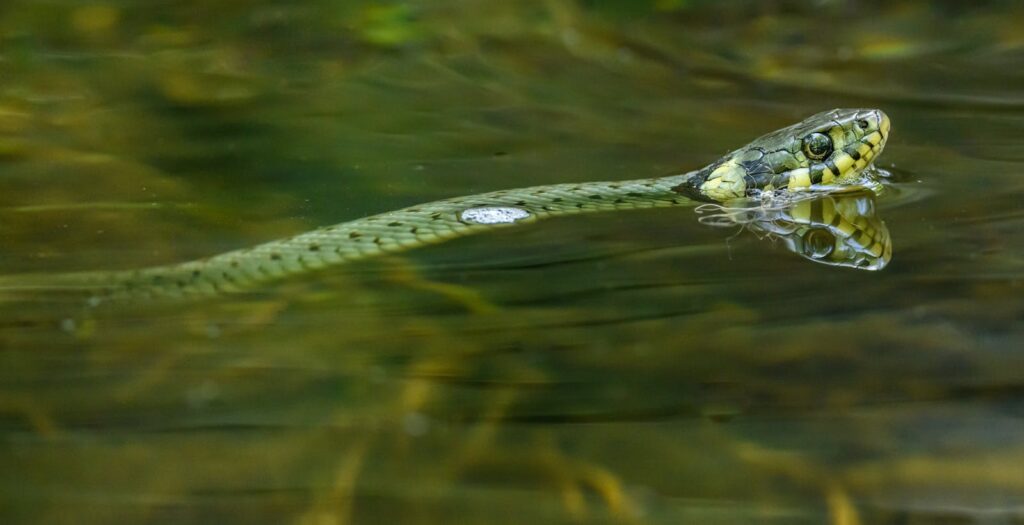
Perhaps the most common misidentification in North America occurs between harmless water snakes (Nerodia species) and the venomous cottonmouth (Agkistrodon piscivorus). Both are semi-aquatic and share similar habitats, but their differences are distinct when you know what to look for. Cottonmouths have a blocky, triangular head that’s distinctly wider than their neck, vertical pupils (in good light), and a thick, heavy body with a more abrupt taper to the tail. Common water snakes have a more rounded head that’s only slightly larger than their neck, round pupils, and a more gradually tapering body. When threatened, cottonmouths often hold their ground and display the white interior of their mouth (hence the name), while water snakes typically flee immediately, rarely displaying defensive postures.
Rat Snakes vs. Rattlesnakes
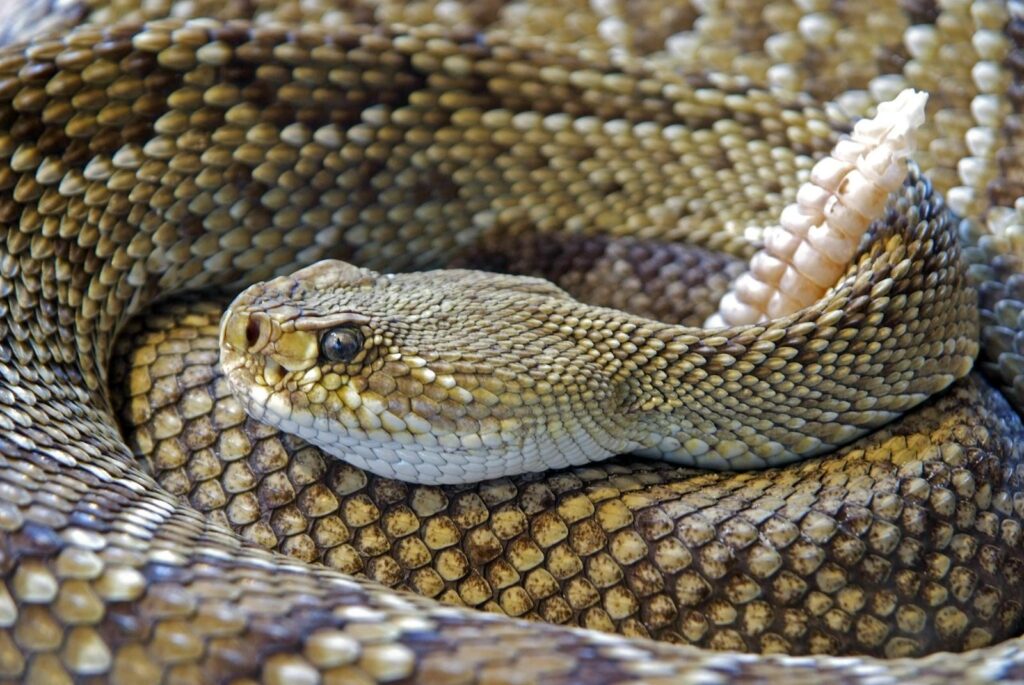
Rat snakes, particularly black rat snakes (Pantherophis obsoletus) and gray rat snakes, are frequently mistaken for rattlesnakes due to their size and occasional defensive behavior. When frightened, rat snakes may vibrate their tails rapidly against leaves or ground debris, creating a sound reminiscent of a rattlesnake’s warning. The key differences lie in their head shape and body patterns – rat snakes have elongated heads only slightly wider than their necks and lack the heat-sensing pits between the eye and nostril that all pit vipers (including rattlesnakes) possess. Rattlesnakes have distinctly triangular heads, heavier bodies with less taper, keeled scales giving them a rougher appearance, and of course, rattles on their tails (though these may be missing due to damage). Rat snakes are also excellent climbers and are frequently found in trees or on structures, behavior rarely seen in rattlesnakes.
Gopher Snakes vs. Rattlesnakes
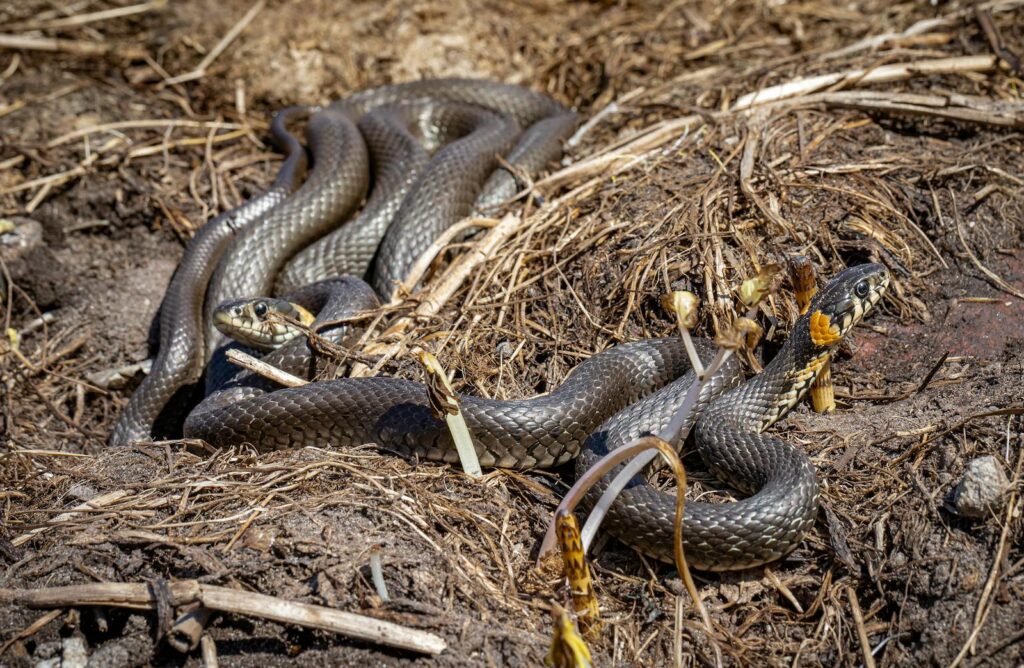
Gopher snakes (Pituophis catenifer), also known as bull snakes in some regions, are among the most frequently misidentified non-venomous snakes in western North America. These beneficial predators have evolved to mimic rattlesnakes as a defensive strategy – they flatten their heads to appear triangular, hiss loudly, vibrate their tails, and even adopt a striking posture when threatened. Despite these convincing behaviors, gopher snakes have round pupils (rattlesnakes have vertical), lack facial pits, have narrower heads when not defensive, and display a distinctive pattern of large blotches down their backs that differs from the diamond or geometric patterns of rattlesnakes. Gopher snakes also have a pointed tail without rattles and tend to be longer and more slender than rattlesnakes of comparable age.
Hognose Snakes vs. Cobras or Vipers

Eastern hognose snakes (Heterodon platirhinos) are famous for their dramatic defensive displays that can frighten even experienced observers. When threatened, these harmless snakes flatten their necks and raise their heads in a cobra-like hood, hiss loudly, and may strike repeatedly (with mouth closed). This theatrical performance has earned them nicknames like “puff adder” or “spreading adder,” causing confusion with true vipers. The upturned snout that gives hognose snakes their name is their most distinctive feature, along with a stocky body and keeled scales. If their initial intimidation display fails, hognose snakes perform an elaborate death-feigning behavior, rolling onto their backs with mouth open and tongue hanging out – a behavior no venomous North American snake exhibits. Despite their intimidating act, hognose snakes are rear-fanged with mild venom used for subduing prey and pose virtually no threat to humans.
Milk Snakes vs. Coral Snakes
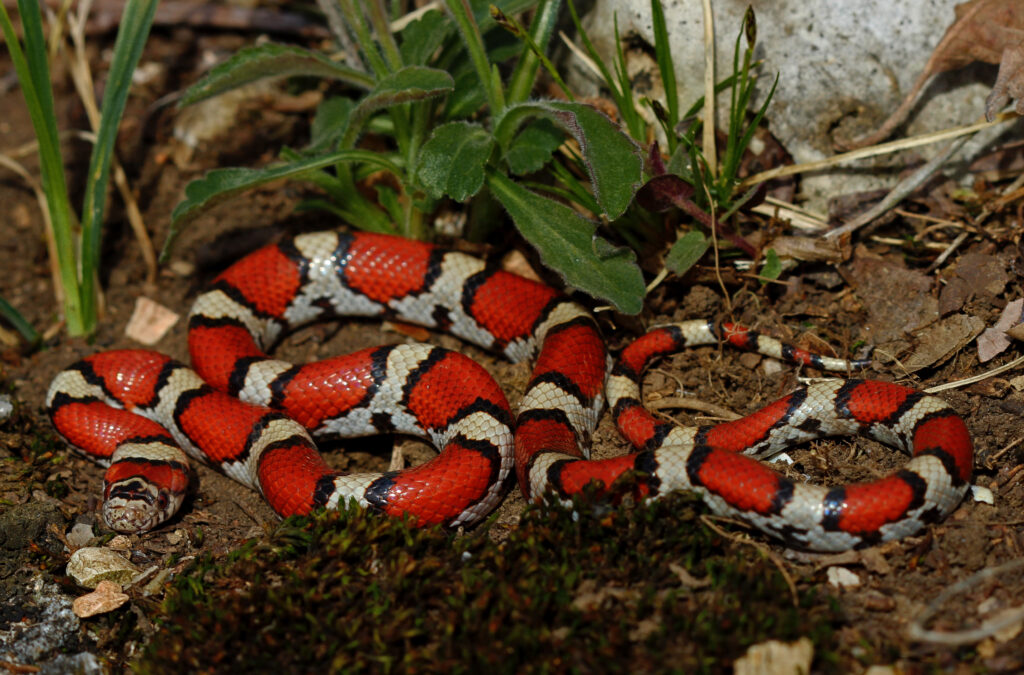
The confusion between scarlet kingsnakes or milk snakes (Lampropeltis species) and venomous coral snakes exemplifies mimicry in the snake world, with the harmless species evolving to resemble their dangerous counterparts. Both feature distinctive red, black, and yellow/white banding, leading to the well-known rhyme “red touch yellow, kill a fellow; red touch black, friend of Jack” to distinguish them in North America. Coral snakes have red bands bordered by yellow bands, while milk snakes and scarlet kingsnakes have red bands bordered by black. Beyond this color pattern, coral snakes have round black heads with a blunt snout, while milk snakes have a more defined neck and pointed snout with a black and white checkerboard pattern on their bellies. Behaviorally, coral snakes are secretive and rarely seen, whereas milk snakes are more commonly encountered in a variety of habitats.
Garter Snakes vs. Small Vipers

Garter snakes (Thamnophis species) are among North America’s most common snakes but are sometimes mistaken for small venomous species, particularly by those unfamiliar with snakes. Their slender bodies, distinctive stripes running lengthwise (rather than crosswise bands), and relatively small heads easily distinguish them from vipers when examined closely. Garter snakes typically have three longitudinal stripes—one down the middle of the back and one on each side—though pattern variations exist among different species and regions. Unlike pit vipers, garter snakes have round pupils, lack facial pits, and exhibit much quicker, more fluid movements. While garter snakes do possess a mild venom delivered through rear fangs, it’s not medically significant to humans and is primarily used to subdue small prey.
Eastern Indigo Snakes vs. Black Racers vs. Cottonmouths

In the southeastern United States, several large black snakes are frequently confused, leading to misidentification of both venomous and non-venomous species. The eastern indigo snake (Drymarchon couperi), a federally protected species, is a glossy blue-black snake that can reach over 8 feet in length and is sometimes mistaken for a black racer or dark phase cottonmouth. Black racers (Coluber constrictor) are similarly colored but more slender with a distinctive white chin, while cottonmouths, even in their dark phase, retain a more robust body, triangular head, and facial pits. Eastern indigo snakes have larger, smoother scales than either species, giving them their characteristic glossy appearance, and they move with slower, more deliberate movements compared to the lightning-fast racers. Protection of eastern indigo snakes is particularly important as they’re apex predators that help control venomous snake populations, including rattlesnakes.
Copperheads vs. Corn Snakes
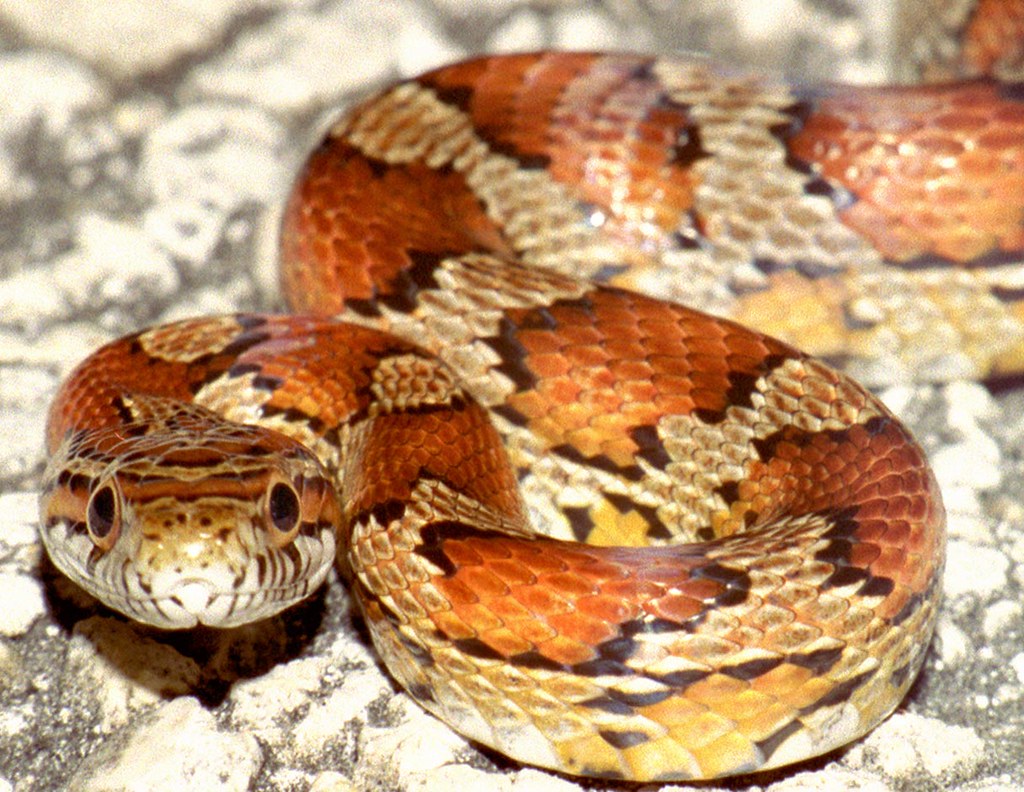
Juvenile corn snakes (Pantherophis guttatus) with their reddish-brown saddle patterns are frequently misidentified as the venomous copperhead (Agkistrodon contortrix), leading to needless killing of these beneficial rodent predators. Corn snakes have a more vibrant pattern with distinct black borders around their reddish-brown blotches, a pattern that’s more checkerboard than hourglass-shaped. Copperheads display the characteristic copper-colored, hourglass-shaped crossbands with no black borders, along with a triangular head, heat-sensing pits, and vertical pupils. Young copperheads possess a yellow-tipped tail they use as a lure for small prey—a feature never present in corn snakes. Behaviorally, corn snakes are excellent climbers often found in trees or elevated structures, while copperheads are primarily terrestrial and more often found concealed under ground cover.
Pine Snakes vs. Rattlesnakes
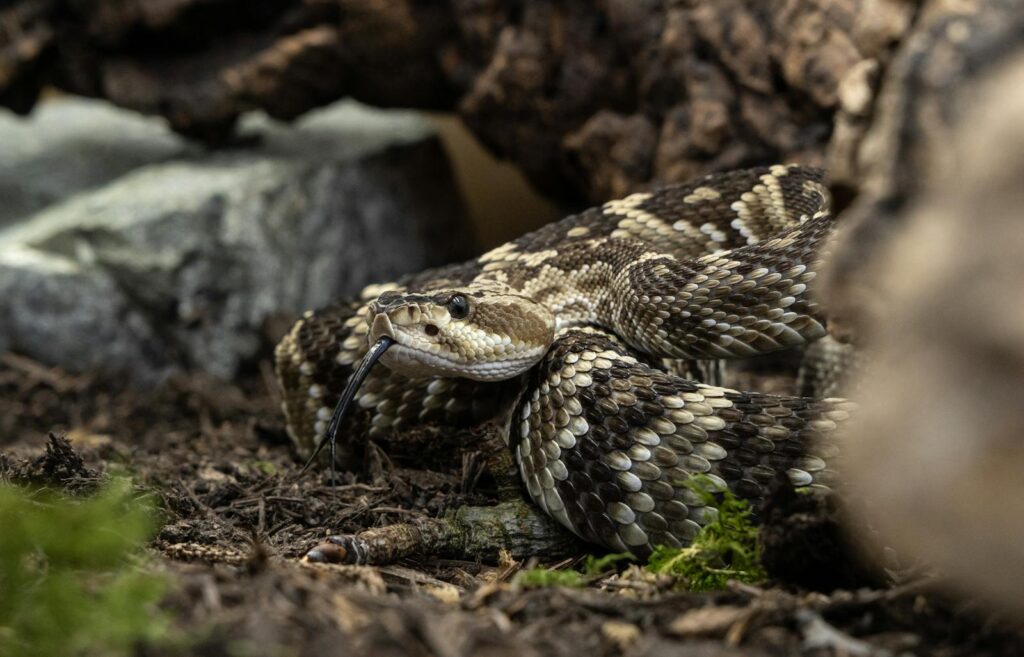
Pine snakes (Pituophis melanoleucus), close relatives of gopher snakes, share many of the same defensive tactics that lead to confusion with rattlesnakes. These large constrictors can grow to over six feet long and possess a light background color with dark blotches down their backs. When threatened, pine snakes inflate their bodies, flatten their heads to appear more triangular, and produce a remarkably loud hissing sound due to a specialized epiglottal structure in their throat. This dramatic display, combined with tail vibration, creates an effective rattlesnake mimicry that fools many observers. Unlike rattlesnakes, pine snakes have round pupils, lack facial pits, possess a spear-shaped rostral scale (nose scale) adapted for burrowing, and have smoother scales that give them a glossier appearance than the rough-scaled rattlesnakes.
Ribbon Snakes vs. Young Cottonmouths
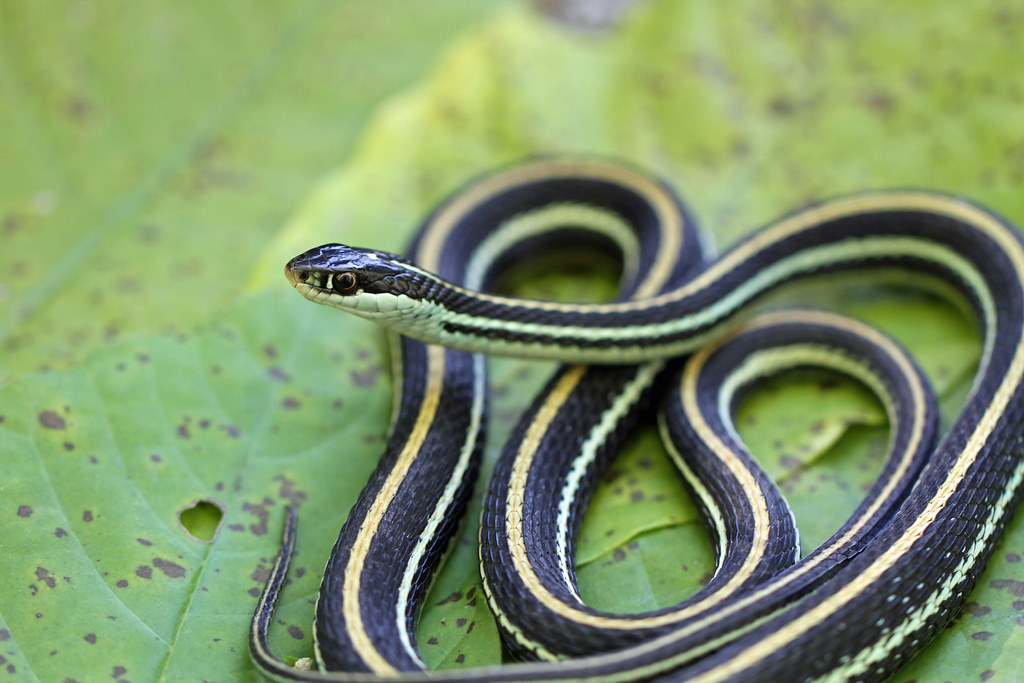
Ribbon snakes (Thamnophis saurita), close relatives of garter snakes, are slender, semi-aquatic snakes that are sometimes confused with juvenile cottonmouths in southeastern wetland habitats. Both species may be found near water, but their physical characteristics are quite distinct. Ribbon snakes are exceptionally thin with three bright longitudinal stripes running the length of their bodies and a long, whip-like tail that makes up nearly a third of their total length. Young cottonmouths, while smaller than adults, still display the heavy body shape, triangular head, facial pits, and vertical pupils characteristic of their species, along with distinct crossbands rather than stripes. Ribbon snakes move with graceful speed both in and out of water, while even young cottonmouths exhibit the slower, more deliberate movements typical of pit vipers.
Kingsnakes vs. Massasaugas
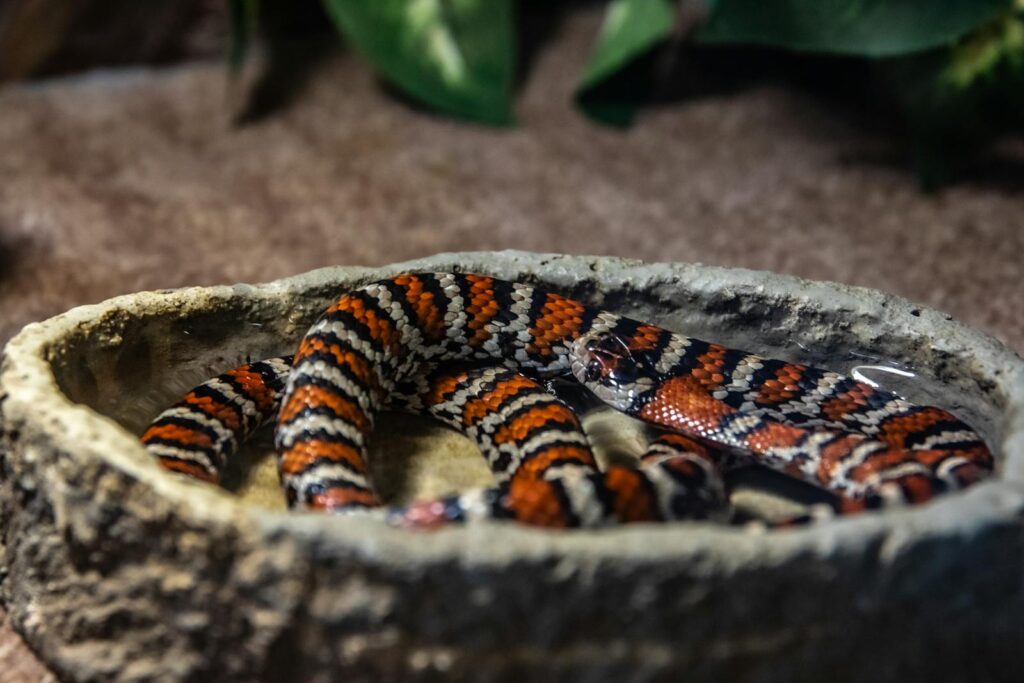
In the midwestern United States, the prairie kingsnake (Lampropeltis calligaster) is sometimes confused with the endangered massasauga rattlesnake (Sistrurus catenatus). Both species display a pattern of dark blotches on a lighter background, but several key differences exist. Kingsnakes have smooth scales giving them a glossy appearance, round pupils, no facial pits, and a more elongated head profile. Massasaugas possess the triangular head, vertical pupils, heat-sensing pits, and keeled (ridged) scales characteristic of all pit vipers, along with a small but distinctive rattle. The prairie kingsnake’s blotches tend to be more regularly shaped and distributed, while the massasauga’s markings are often more irregular with lighter edges. Additionally, kingsnakes are immune to pit viper venom and actually prey upon smaller venomous snakes, making them beneficial in controlling rattlesnake populations.
Australian Brown Snakes vs. Common Tree Snakes
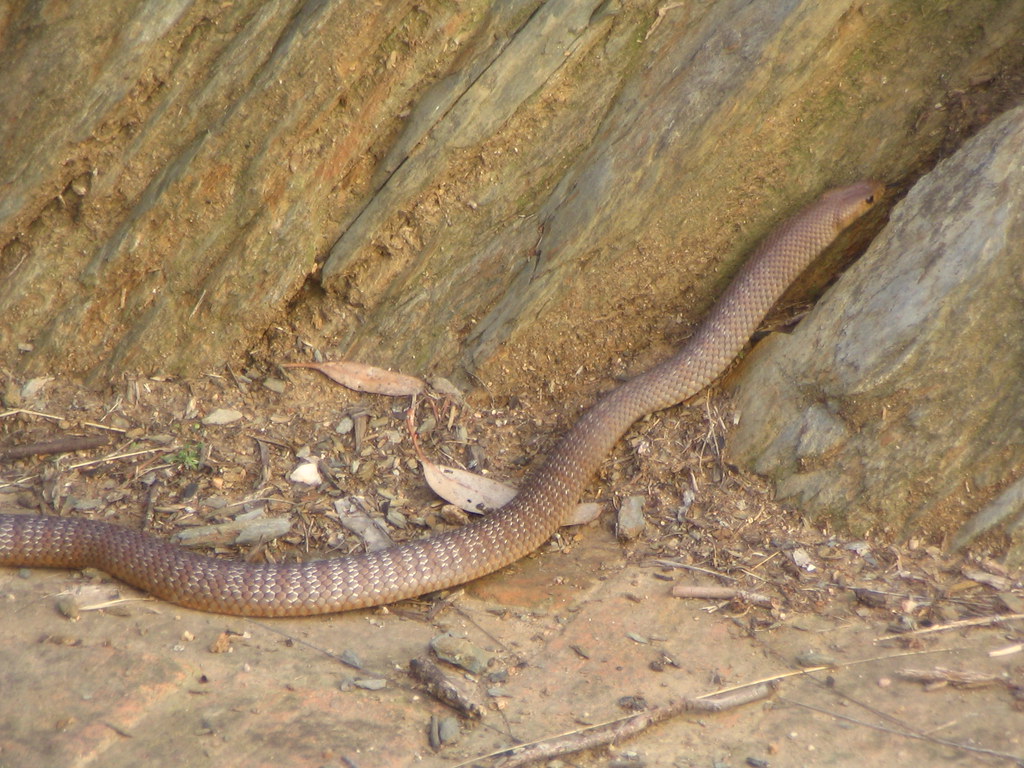
Moving beyond North America, Australia presents its own set of dangerous misidentifications. The highly venomous eastern brown snake (Pseudonaja textilis) is sometimes confused with the harmless common tree snake (Dendrelaphis punctulatus), particularly when the latter displays its brown color phase. Eastern brown snakes are responsible for more deaths in Australia than any other snake species and feature a slender body with a relatively uniform brown coloration, small head barely wider than the neck, and distinctive dark flecking on the belly. Common tree snakes, while similarly slender, have a more distinct neck, larger eyes, and a pointed snout, often with a blueish tint to the inside of their mouth (leading to their alternate name “green tree snake” despite color variations). Tree snakes are also excellent climbers frequently found in vegetation, while brown snakes are primarily terrestrial and much more aggressive when confronted.
The Dangers of Misidentification
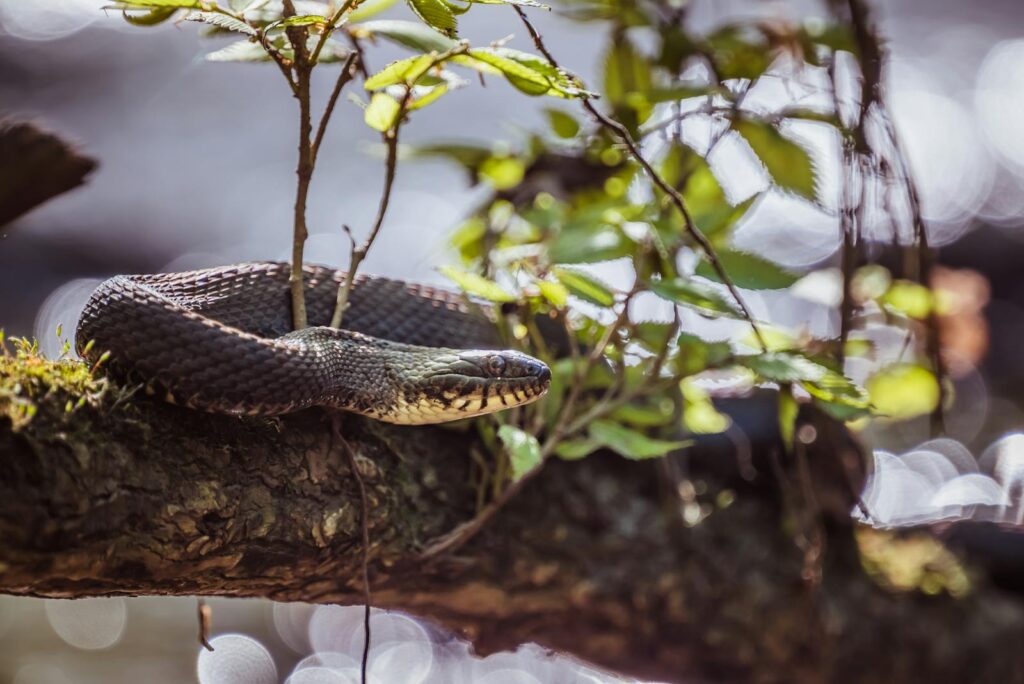
Misidentifying snakes can have serious consequences for both humans and snake conservation. When venomous snakes are incorrectly identified as harmless, people may approach them carelessly, potentially resulting in dangerous envenomation that can cause tissue damage, neurological effects, or even death depending on the species and circumstances. Conversely, when harmless snakes are mistaken for venomous species, they’re often needlessly killed, reducing populations of beneficial predators that help control rodent populations and maintain ecosystem balance. In some regions, protected species like eastern indigo snakes or pine snakes face population threats partially due to misidentification and subsequent killing. The safest approach when encountering any snake is to maintain a respectful distance—venomous or not, most snake bites occur when people attempt to kill, capture, or handle snakes they encounter.
Improving Your Snake Identification Skills
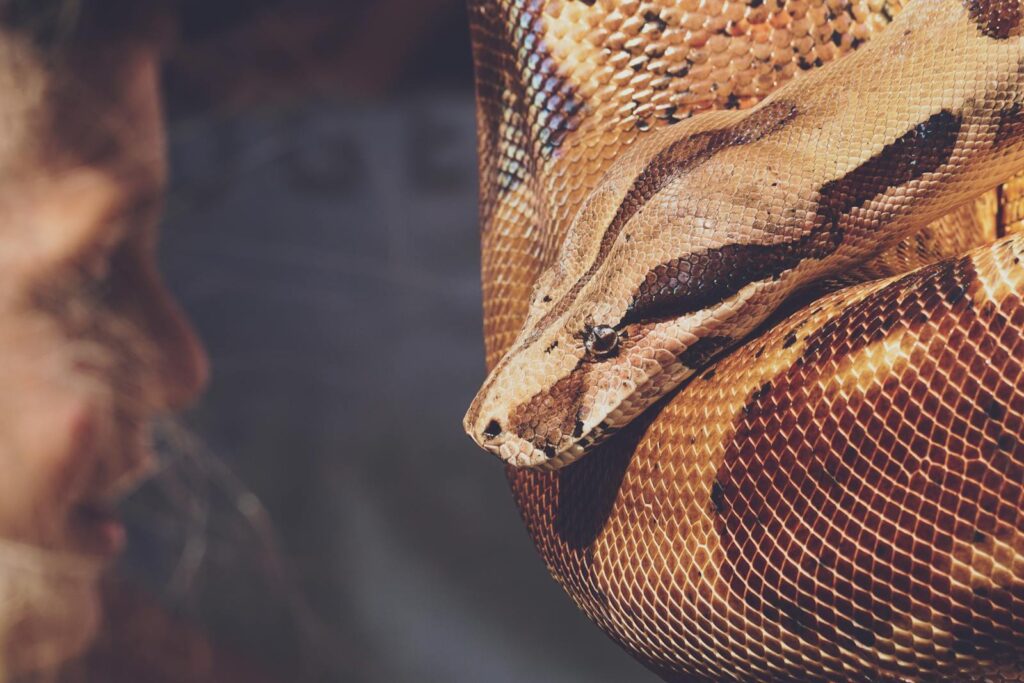
Becoming proficient at snake identification requires patience and consistent learning, but several approaches can accelerate the process. Start by focusing on the venomous species in your specific region rather than trying to learn all snakes at once—most areas have only a handful of venomous species among dozens of harmless ones. Beyond color patterns, which can be variable, learn to recognize head shape, pupil shape, body build, and behavioral differences that distinguish venomous from non-venomous species. Field guides specific to your region, smartphone identification apps with photo capabilities, and local herpetological society websites all provide valuable resources. Consider attending guided nature walks led by experienced herpetologists who can demonstrate identification techniques in the field. Remember that even experts occasionally need to examine multiple characteristics to make positive identifications, so never handle a snake unless you’re absolutely certain of its identity.
Conclusion
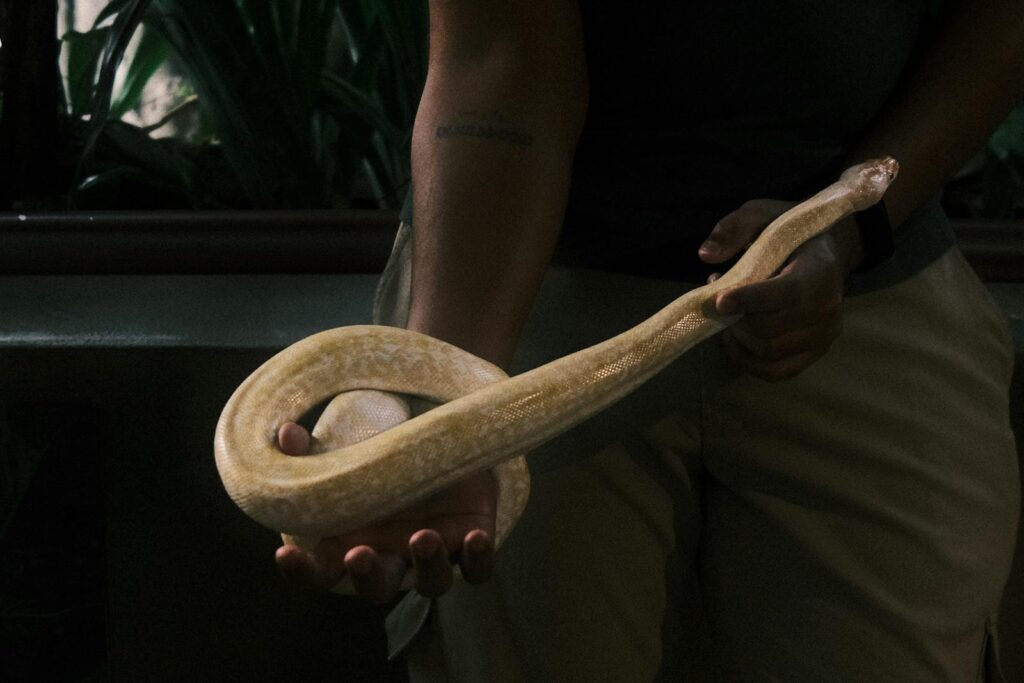
Accurate snake identification is not just a matter of personal safety—it’s an essential conservation skill. The majority of snakes encountered by humans are harmless and beneficial, controlling pest populations and serving important ecological functions. By learning to distinguish between venomous snakes and their harmless mimics, we can make more informed decisions when encountering these fascinating creatures in the wild. Rather than reacting with fear, which often leads to unnecessary killing, we can respond with knowledge, giving harmless species the space to fulfill their ecological roles while taking appropriate precautions around venomous ones. With practice and attention to the key identification features outlined in this guide, most common snake misidentifications can be avoided, fostering a safer coexistence between humans and these important reptiles.





